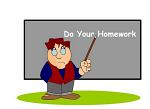The following words and phrases are some of the more common terminology that you’ll hear in discussions at PFLAG support meetings . . . and on your television, in newspapers, on your radio, and just about anywhere. Unfortunately, these words and phrases are often misused or  used incorrectly when presented by mainstream media. To help clear up the confusion (or lack of education) regarding these terms, the National Lesbian and Gay Journalists Association (NLGJA) has prepared a “NLGJA Stylebook Supplement on Gay, Lesbian, Bisexual and Transgender Terminology” to assist the mainstream media in using these terms correctly. Below are selected words and phrases excerpted from their stylebook, and the corresponding definition and proper use notation where denoted. We have also incorporated terminology defined by the Washington State Safe Schools Coalition to add to the list of terms below. We hope these definitions and use notations will also help you to better understand these common words and phrases. [Note: The terms listed below are not arranged alphabetically; they are arranged logically so that related terms are grouped together and, where applicable, one term builds upon another.]
used incorrectly when presented by mainstream media. To help clear up the confusion (or lack of education) regarding these terms, the National Lesbian and Gay Journalists Association (NLGJA) has prepared a “NLGJA Stylebook Supplement on Gay, Lesbian, Bisexual and Transgender Terminology” to assist the mainstream media in using these terms correctly. Below are selected words and phrases excerpted from their stylebook, and the corresponding definition and proper use notation where denoted. We have also incorporated terminology defined by the Washington State Safe Schools Coalition to add to the list of terms below. We hope these definitions and use notations will also help you to better understand these common words and phrases. [Note: The terms listed below are not arranged alphabetically; they are arranged logically so that related terms are grouped together and, where applicable, one term builds upon another.]
Sexual Orientation Terminology
Sexual Orientation: Innate sexual attraction. One’s core sense of the gender(s) of people toward whom one feels romantically and sexually attracted. The inclination or capacity to develop intimate emotional and sexual relationships with people of the same gender, a different gender or more than one gender. Doesn’t presume sexual experience/activity (i.e., sexual minority people are as capable as heterosexual people of choosing to abstain). To some degree, the qualities one finds attractive may be learned, probably in the first few years of life. There is growing evidence that people may be, however, biologically (hormonally, genetically) predisposed to be more attracted to one gender or another or to people of more than one gender. In all instances, use this term instead of sexual preference or other misleading terminology. See lifestyle. [Note: Some people object to the term “orientation” and instead prefer the term “Sexual Identity.”]
Sexual Preference: Avoid. See sexual orientation. [Note: Outdated term that fell out of favor once the scientific, medical and  psychological communities began to acknowledge that one’s Sexual Orientation/Sexual Identity was not a “preference”, which implies a conscious choice available to the GLBT individual.]
psychological communities began to acknowledge that one’s Sexual Orientation/Sexual Identity was not a “preference”, which implies a conscious choice available to the GLBT individual.]
Gender Identity: One’s understanding or feeling about whether one is emotionally or spiritually male or female or both or neither. A person may be congruent (i.e., his/her gender identity and physical gender are consistent) or transsexual (born biologically one gender; but emotionally and spiritually, the other) or not quite either one.
Straight: Heterosexual; non-gay. Term preferred by some straight people as less clinical and formal than heterosexual, but some dislike it because it gets confused with not using drugs or with being a rigid person. Some GLBT people object to it as implying that they must be, in contrast, bent.
Heterosexual: Clinical synonym for straight. When discussing with school-aged children, the following references may be more appropriate:
- K-3: “A man who loves a woman or a woman who loves a man.”
- 4-8: “A man who gets strong crushes on women more often than on men, or who falls in love with a woman. Or a woman who falls in love with a man.”
- 9-12: “A person who is romantically and sexually most attracted to people of the other gender.”
Gay: An adjective that has largely replaced “homosexual” in referring to men who are sexually and affectionally attracted to other men. Avoid using as a singular noun. For women, “lesbian” is preferred. To include both, use “gay men and lesbians.” In headlines where space is an issue, “gays” is acceptable to describe both. When discussing with school-aged children, the following references may be more appropriate:
- K-3: “A man who loves another man or a woman who loves another woman.”
- 4-8: “A man who gets strong crushes on other guys more often than on women, or who falls in love with a man. Or a woman who falls in love with another woman (but she might prefer to call herself lesbian than gay).”
- 9-12: “A person who is romantically and sexually most attracted to people of his or her own gender. The term refers to people of any gender, but when possible, it’s more respectful to use the terms gay and lesbian.”
Homosexual: Avoid this term; it is clinical, distancing and archaic. Sometimes appropriate in referring to behavior (although same-sex is the preferred adj.). When referring to people, as opposed to behavior, homosexual is considered derogatory and the terms gay and lesbian are preferred. Use only if “heterosexual” would be used in parallel constructions, such as in medical contexts. For other usages, see gay and lesbian.
Lesbian: Preferred term, both as a noun and as an adjective, for women who are sexually and affectionally attracted to other women. Some women prefer to be called “gay” rather than “lesbian”. Other lesbians feel invisible when the term gay is used to refer to men and women. When possible, ask the subject what term she prefers.
Bisexual: As a noun, an individual who may be attracted to either sex. As an adjective, of or relating to sexual and affectional attraction to either sex. Does not presume non-monogamy (or, for that matter, any sexual activity). Some people self-identify as bi rather than bisexual. [Note: While a bisexual individual can be attracted to individuals of either sex, it does not imply that they can be/will be attracted to more than one individual at a time.]
Transgender: See Gender Identity Expression
GLBTQ: Acronym for “gay, lesbian, bisexual, transgender and ‘questioning’.” Sometimes used, for example, to identify the young people who attend a school-based support group. Some groups also welcome heterosexual friends and allies and/or students with GLBT family members.

[Note: Sometimes denoted as “GLBT”, as used throughout our website, or LGBT. Other variations might include GLBTQQAI which includes gay, lesbian, bisexual, transgender, “questioning”, queer, allied, aromantic, asexual, agender, and intersex people.]
Queer: Pejorative term for gay. Now being reclaimed by some young gays, lesbians, bisexuals and transgender people and those whose identities are fluid, especially White young people living on the Coasts, as a self-affirming umbrella term, but it is still a slur in many contexts and is generally prohibited in schools with anti-harassment policies.
Ally: A member of a historically more powerful identity group who stands up against bigotry. For example, a man who confronts his friend about harassing women, a Christian who helps paint over a swastika, or a heterosexual person who objects to an anti-gay joke.
Closeted, In The Closet: Refers to a person who wishes to keep secret his or her sexual orientation or gender identity.
Coming Out: Short for “coming out of the closet.” The process of first recognizing and acknowledging non-heterosexual orientation or trans-gender identity to oneself and then sharing it with others. Developmentally, many sexual minority youth will initially erect emotional barriers with acquaintances, friends and family by pretending (actively or through silence) to be heterosexual and congruent. Coming out means dropping the secrecy and pretense and becoming more emotionally integrated. This usually occurs in stages and is a non-linear, lifelong process.
Outing: Publicly revealing the sexual orientation or gender identity of an individual who has chosen to keep that information private. Also a verb: The magazine outed the senator in a front-page story.
